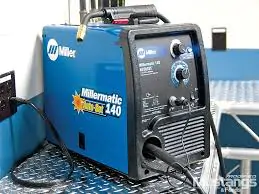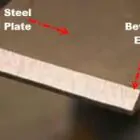Maintain Your MIG Gun
Taking care of MIG gun equipment can be seen as downtime, but that doesn’t mean it’s wasted time. Proper gun maintenance can make the equipment last much longer. It saves even more money by reducing the need to fix welds. By finding and fixing small problems, like loose connections, you can avoid bigger problems with equipment and welds.
Here are some tips on how to keep most MIG guns in good shape. Follow the safety instructions given by the gun’s maker at all times. For example, disconnect the gun from the feeder. Let it cool down before doing any maintenance that could expose live electrical circuits.
Connecting the feeder
When a wire feeder connection is loose or dirty, electrical resistance and heat can build up at the connection point. This can cause voltage drops, an unstable arc, and early equipment failure. You should check the connection by hand once a week or every time you put the gun on the wire feeder to make sure it is clean and fits tightly. If the connection is loose and can’t be tightened according to the manufacturer’s instructions, it’s best to replace the direct plug with one that fits securely. Use electrical contact cleaner to clean a dirty direct plug when you need to.
The O-rings that keep out air and let the shielding gas into the cable hose are another part of the feeder connection that can break. Over time, these O-rings can dry out and crack. When the gun is put in place, they can also be cut or otherwise damaged. Gas leaks caused by bad O-rings can lead to porosity, too much spatter, and other problems that need to be fixed and cause gas to be wasted. Every time the gun is taken out of the feeder, it should be checked and lubricated with silicone.
Cable
When a MIG equipment breaks, the cable is usually the only part that needs to be replaced along with the whole gun. Because of this, cable maintenance is very important to keep equipment costs down. Every day, gun cables should be checked for cuts, kinks, and other damage with the naked eye. If the cable is cut, the copper wiring inside could be exposed, which could be dangerous.
The cable should also be run as straight as possible from the feeder to where the welding will be done. Severe bends in the cable can block the flow of gas and the feeding of the wire, which can cause porosity, an erratic arc, and other weld flaws that take time to fix.
Liner
The liner is often the hardest part of the gun to check and keep in good shape. It is also one of the most common places where things go wrong when welding. As the welding wire moves through the liner, pieces of it often break off and pile up. Over time, these buildups can cause the wire to not feed properly. It can cause birds to nest in it, and the wire to burn back. These problems can also happen if the liner gets twisted or if the cable is bent too far.
Taking out the liner to inspect and clean it thoroughly takes time and isn’t necessary if there aren’t any problems. Instead, to keep the liner from getting clogged, use compressed air to blow out any possible clogs when you switch wires or take the wire out of the gun. If you spend a few extra minutes cleaning out the liner, you can save a lot more time than if you had to troubleshoot the weld defects and MIG equipment problems that can happen because of blockages.
Handle and Trigger
Most of the time, the only maintenance the handle and trigger need is a visual check. Check to see if any screws are missing or the handle is broken, and pull the trigger to make sure it doesn’t stick or do anything else wrong. You should do these checks every time you use the gun, which takes only a few seconds.
If any copper from the weld cable is exposed on a broken handle, it could cause an electric shock. A dirty, broken, or worn-out trigger can make a number of problems with the weld, so you should get a new one.
Neck
The welding cable sends electricity to the consumables through the neck. Loose connections at either end can make it hard for electricity to flow through, which can lead to bad welds and more MIG equipment breaking down because of the heat made by electrical resistance. Every day, make sure the neck connections are tight.
There are also external insulators on the necks of MIG guns that keep the electrically live parts from being exposed. Electrical parts that are exposed near the handle can be dangerous, and electrical parts that are exposed near the consumables could arc to the work piece and damage both the gun and the piece it is working on. At least once a week, the insulators should be looked at and, if necessary, replaced.
Consumables
The consumables need to be replaced often because they are exposed to heat, splatter, and general abuse. But that doesn’t mean you can’t save time and money with some easy maintenance.
The gas diffuser connects to the neck and sends the electrical current to the contact tip. It also lets gas flow into the weld pool. Loose connections between the diffuser and the neck or the diffuser and the contact tip can cause gas leaks, poor weld quality, and equipment problems due to poor conductivity and built-up electrical resistance. Whenever the nozzle is changed, these should be checked and tightened with the tools suggested by the manufacturer.
Most diffusers also use O-rings to seal in the shielding gas. Like the ones at the back of the gun, you should check these for cracks, cuts, or other damage every time you take the nozzle off and replace them if necessary.
Nozzles
The main job of the nozzle is to concentrate the shielding gas around the weld pool. Spatter can build up inside the nozzle and block the flow of gas, which can lead to holes, too much spatter, and other problems caused by not enough shielding gas coverage. Getting rid of the built-up spatter can also damage the nozzle and nozzle insulator.
Depending on how much spatter you make when you weld, you should check the nozzle and clean it several times a day. The most common tool for cleaning nozzles is a pair of welding pliers, but there are other tools that are made just for getting spatter out of the nozzles.
The copper or brass body of the nozzle is kept separate from the electrically live parts by the nozzle insulator. If the insulator is broken, the nozzle could arc to the workpiece. Most of the time, just looking at the nozzle insulator is enough to tell if it is in good shape. If the insulator is damaged, the whole nozzle needs to be replaced.
Talk to Tip
The contact tip is the last part of the consumables set. It is the last place where the MIG welding equipment and the welding wire touch each other. As the wire goes through the contact tip, it can wear away the inside of the tip bore. This can stop the flow of electricity and make it hard to control the arc. The tip can also get covered with spatter, which won’t let enough gas out.
Welding operators usually don’t change the contact tip until there is a problem with the weld. However, the time it takes to fix a weld problem can be much longer than the time it takes to visually inspect. And then replace the contact tip as a standard maintenance procedure.
Industrial-grade MIG welding equipment is made to be as efficient as possible, but even the best equipment will break down at some point. Whether you notice the problem with the equipment early on or after it gets worse is up to you, though. By taking the simple, preventative maintenance steps listed above, you can greatly extend the life of your equipment and avoid having to fix expensive weld problems if it breaks down.





